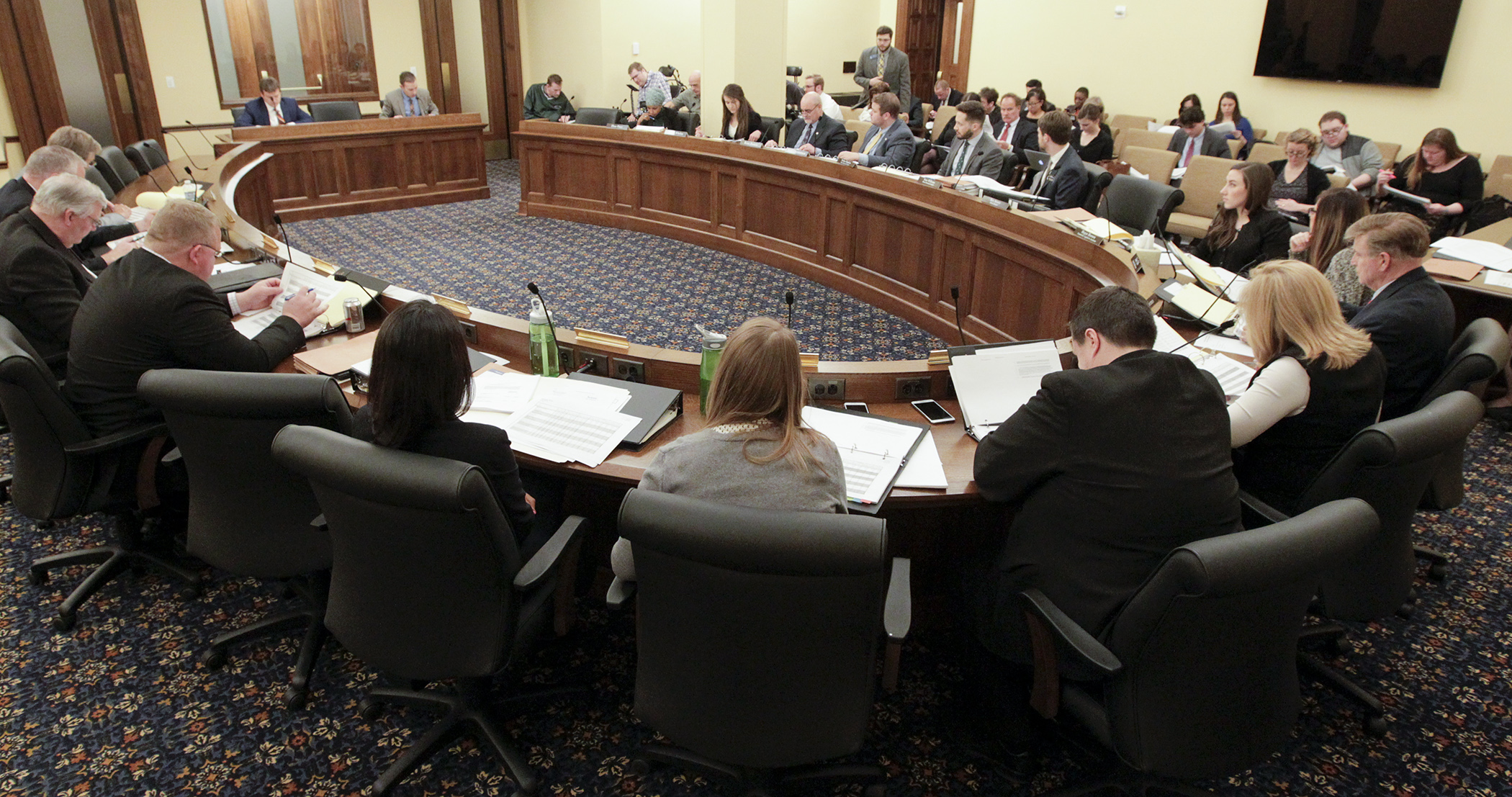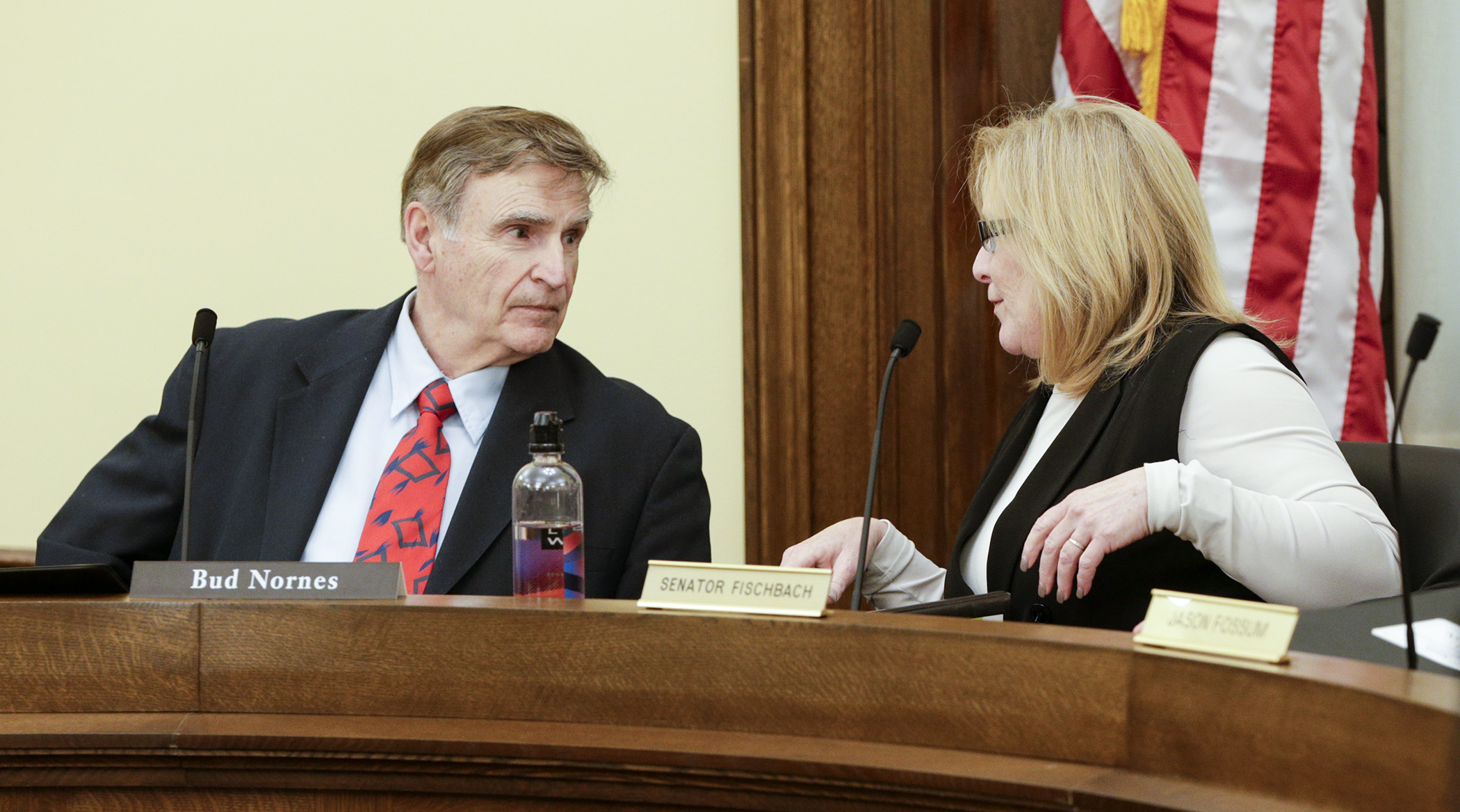Higher Ed conference group begins to hash out policy differences

Tasked with crafting a proposal that would offer affordability and accessibility for post-secondary education opportunities, Gov. Mark Dayton has asked lawmakers to do so without attaching policy provisions.
The House passed HF2477/ SF2214*, sponsored by Rep. Bud Nornes (R-Fergus Falls), 77-53 on April 4. The Senate version, sponsored by Senate President Michelle Fischbach (R-Paynesville), passed 36-31 Feb. 28.
With substantial differences in both the House and Senate proposals, a conference committee met Wednesday to begin compromising a path forward.
Under the House proposal, the University of Minnesota would receive $1.2 billion over the 2018-19 biennium, an increase of $10 million in Fiscal Year 2018 and $12 million Fiscal Year 2019. The Senate version proposes an increase of $16.9 million in each fiscal year. The university’s budget request earlier in session was an increase of $147.2 million over the biennium.
Minnesota State would receive $1.4 billion over the biennium per the House bill, an increase of $42 million in Fiscal Year 2018 and $51 million in Fiscal Year 2019. The Senate version proposes $26.7 million and $26.5 million in the respective fiscal years. System officials requested $178 million in new biennial funding.
The Office of Higher Education would receive $501 million during the biennium via the House plan, a $33.8 million increase. The largest portion would go to state grants, allocating $193 million per year. The Senate version proposes $484.6 million in funding, a $17.1 million increase, and allocating $185 million per year for state grants.
Differing decisions
The bodies ignored Dayton’s request for a policy-free bill and substantial differences exist between both bills.
For starters, there’s the issue of rising tuition costs for incoming colleges students.
 Rep. Bud Nornes, chair of the House Higher Education and Career Readiness Policy and Finance Committee, and Senate President Michelle Fischbach, chair of the Senate Higher Education Finance and Policy Committee, confer before the start of the first conference committee meeting on the omnibus higher education policy and finance bill April 19. Photo by Paul Battaglia
Rep. Bud Nornes, chair of the House Higher Education and Career Readiness Policy and Finance Committee, and Senate President Michelle Fischbach, chair of the Senate Higher Education Finance and Policy Committee, confer before the start of the first conference committee meeting on the omnibus higher education policy and finance bill April 19. Photo by Paul BattagliaThe House version requires a tuition freeze at Minnesota State colleges in the 2017-18 academic year, and at Minnesota State universities in 2018-19 (coupled with a 1 percent tuition reduction that year). The Senate version requires a tuition freeze at all Minnesota State colleges and universities over the biennium.
Minnesota State Chief Financial Officer Laura King opposes both, previously testifying that, “If this bill becomes law, our campuses will have significant financial pressure.”
Both the House and Senate versions “request” and “encourage” a tuition freeze at the University of Minnesota over the biennium. Due to the university’s constitutional autonomy, the state cannot require it to adhere to legislative requests.
Another House policy provision that will likely prove contentious is a requirement that the University of Minnesota obtain approval from an institutional review board before conducting research on fetal tissue. The provision would also require the university to attempt to identify fetal tissue available due to natural death and be subject to legislative reports and audits.
Other House provisions would:
- mandate Minnesota State colleges and universities admit established Minnesota residents recently graduating in the top 10 percent of their high school graduating class;
- require Minnesota State to offer a program for students with intellectual and developmental disabilities;
- request that the University of Minnesota create a program for students with disabilities similar to Minnesota State;
- prohibit Minnesota State from imposing mandatory fees on students to fund student programs, activities or groups;
- establish a program to provide scholarships for teacher candidates of color;
- require all public and regionally accredited private colleges and universities provide a fact sheet to pregnant students and parents regarding the student’s legal rights and resources; and
- request the University of Minnesota develop an outreach and recruitment program for students in Greater Minnesota.
Senate provisions would create a campus sexual violence prevention and response coordinator position within the Office of Higher Education and expand eligibility for teacher shortage grants to those in underrepresented racial and ethnic groups.
Public testimony is expected to be taken at a hearing next week.
Related Articles
Search Session Daily
Advanced Search OptionsPriority Dailies
Ways and Means Committee OKs proposed $512 million supplemental budget on party-line vote
By Mike Cook Meeting more needs or fiscal irresponsibility is one way to sum up the differences among the two parties on a supplemental spending package a year after a $72 billion state budg...
Meeting more needs or fiscal irresponsibility is one way to sum up the differences among the two parties on a supplemental spending package a year after a $72 billion state budg...
Minnesota’s projected budget surplus balloons to $3.7 billion, but fiscal pressure still looms
By Rob Hubbard Just as Minnesota has experienced a warmer winter than usual, so has the state’s budget outlook warmed over the past few months.
On Thursday, Minnesota Management and Budget...
Just as Minnesota has experienced a warmer winter than usual, so has the state’s budget outlook warmed over the past few months.
On Thursday, Minnesota Management and Budget...